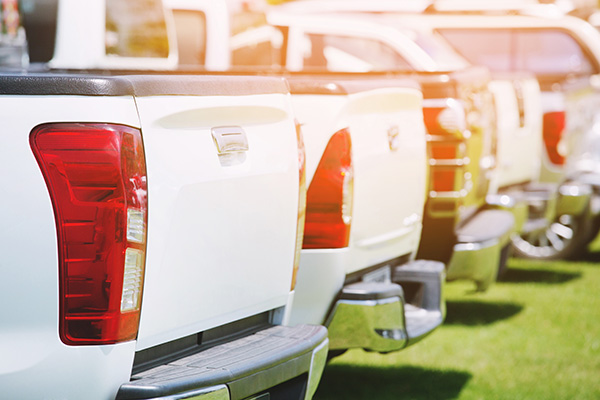
If you’re shopping for a truck or trying to figure out what yours is truly capable of, you’ve probably come across terms like light-duty and heavy-duty. At first glance, the distinction might seem simple—light-duty trucks are for lighter tasks, and heavy-duty trucks are for bigger jobs. But there’s more to it than just size or towing numbers.
Understanding what separates these two classes of trucks is important if you’re planning to haul, tow, or even just choose the right vehicle for everyday use. From frame strength to engine power, light-duty and heavy-duty trucks are built for very different purposes.
What Is a Light-Duty Truck
Light-duty trucks—like the Ford F-150, Ram 1500, or Chevy Silverado 1500—are the most common pickups on the road. They’re designed to balance towing capability, ride comfort, and fuel efficiency. Most people choose them for daily driving, home improvement projects, recreational towing (like small trailers or boats), and general utility.
A light-duty truck can usually tow between 5,000 to 12,000 pounds, depending on the configuration and engine. Payload capacity tends to fall between 1,500 and 3,000 pounds. These trucks are easier to maneuver, more comfortable to drive, and often more fuel-efficient than their heavy-duty counterparts.
For most casual users, a light-duty truck offers all the capability they need with fewer compromises in ride quality and cost.
What Sets Heavy-Duty Trucks Apart
Heavy-duty trucks—such as the Ford F-250/F-350, Ram 2500/3500, and Chevy Silverado 2500HD/3500HD—are purpose-built for serious work. They come with stronger frames, upgraded axles, more powerful engines (often including diesel options), and transmissions tuned for hauling big loads.
Towing capacity in a heavy-duty truck can exceed 30,000 pounds when properly equipped, and payloads can push beyond 6,000 pounds. These trucks are designed for commercial use, heavy trailers, fifth-wheel towing, and construction or farming environments where lighter models just can’t cut it.
The suspension and braking systems are also reinforced to handle those loads without bottoming out or overheating under pressure.
Do You Really Need a Heavy-Duty Truck
This is where many buyers make mistakes. If you’re hauling a few ATVs on the weekend or pulling a small camper, a light-duty truck is more than capable. But if you’re regularly towing large equipment, livestock, or a massive RV, stepping up to a heavy-duty truck makes sense.
The real issue arises when a light-duty truck is pushed to its limits repeatedly. That kind of usage can wear out the transmission, suspension, and brakes much faster than intended. On the flip side, driving a heavy-duty truck when you don’t need it means dealing with a stiffer ride, higher fuel costs, and more expensive maintenance—without actually using the extra capability.
So it’s not about which truck is “better”—it’s about matching the truck to the job you’re doing.
Other Differences You’ll Notice
There are a few more things that stand out when comparing the two:
Ride Quality
Light-duty trucks typically offer a smoother ride and more comfortable features. Heavy-duty trucks are built more for function than luxury (though modern versions still offer plenty of tech and comfort).
Licensing and Insurance
In some cases, heavy-duty trucks might require commercial plates or come with higher insurance premiums.
Fuel Options
Heavy-duty trucks often offer diesel engines, which provide more torque and efficiency under heavy loads but come with higher upfront costs.
Whether it’s a workhorse or a daily driver, Griffin Muffler & Brake Center in Fort Madison, IA, is your go-to shop for trusted service and expert guidance on truck performance and reliability.